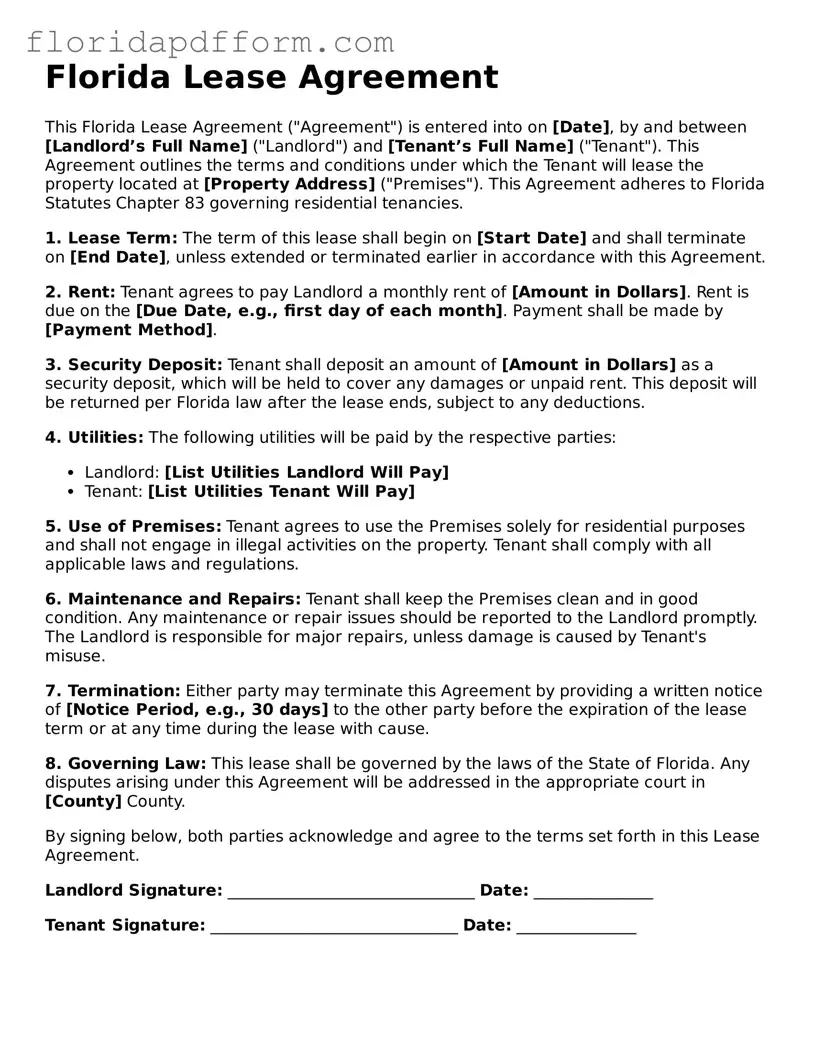Blank Lease Agreement Template for Florida
A Florida Lease Agreement form is a legal document that outlines the terms and conditions between a landlord and a tenant for renting residential or commercial property. This form serves as a crucial tool for both parties, ensuring clear communication and mutual understanding of their rights and responsibilities. By detailing aspects such as rent payment, lease duration, and maintenance obligations, it helps prevent disputes and fosters a positive rental experience.
Launch Editor
